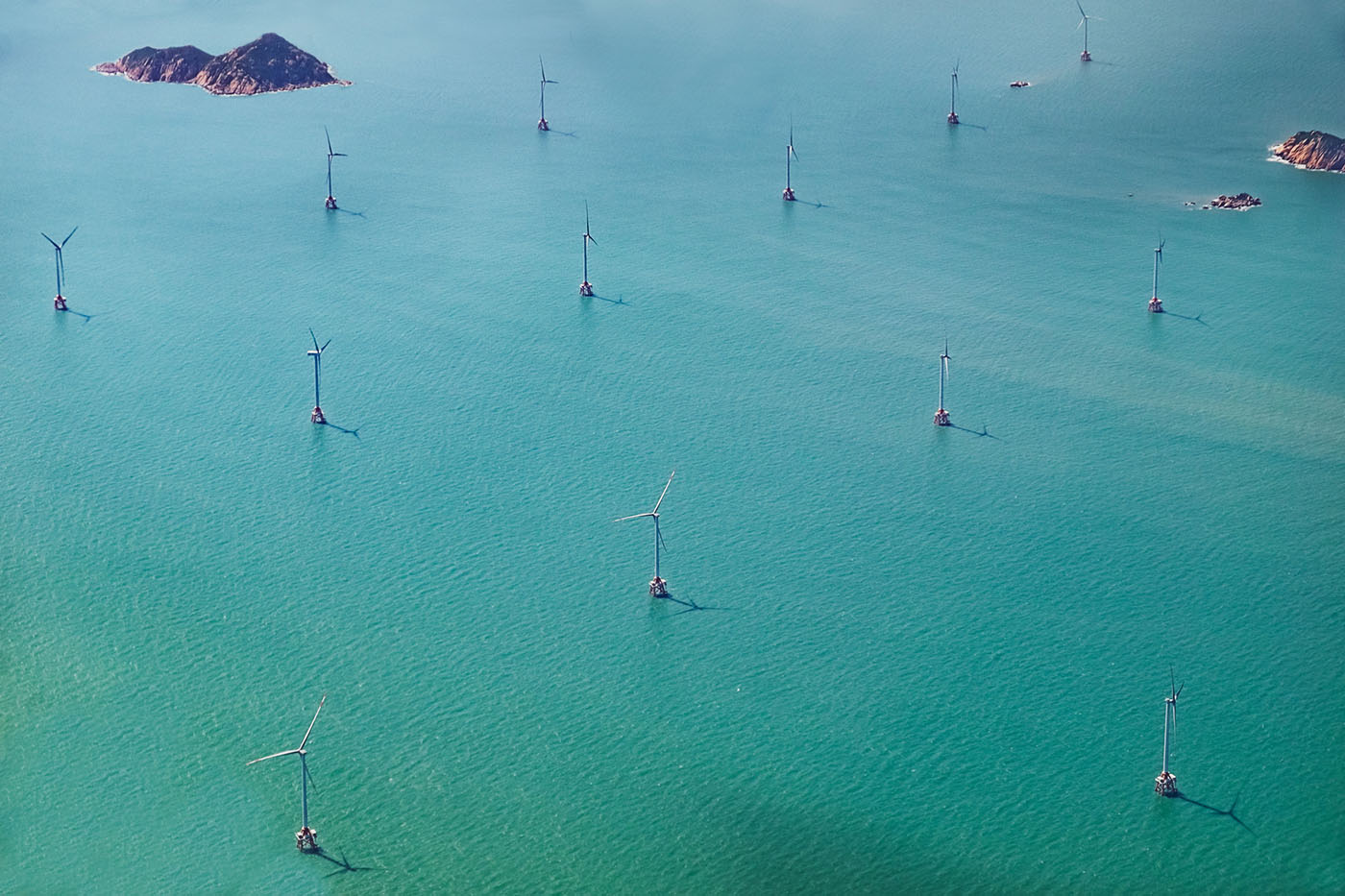
Over the past five years, the Asia-Pacific region has accounted for more than three-quarters of global demand growth for electricity. Estimates earlier this year by analysts with energy research and consulting firm Wood Mackenzie (WoodMac) put that share at 67% through 2040, which would require more than $1 trillion in new investment.
Wind and solar are a critical part of the growth story. While there is still heavy dependence on hydrocarbons, renewables were set to comprise 75% of newly installed APAC electric capacity through 2040.
Also, according to Justin Wu, head of Asia-Pacific at BloombergNEF in Tokyo, APAC will continue boosting renewable capacity more than any other region and will account for more than half of the world’s wind and solar build-out between 2020 and 2025.
“This is mostly because power demand is growing in Asia, and renewables are often the cheapest form of new power generation,” Wu said in an interview. “Furthermore, governments, companies and investors continue to support wind and solar build-out in Asia.”
China builds more wind and solar than any other country. This is due to a combination of power demand, a massive wind and solar industry serving domestic needs, and “supportive government policies,” Wu said. India, Southeast Asia, Japan, and Korea are also seeing growth.
To date, COVID-19 has had a relatively muted impact on APAC renewable energy investment and capacity build-out. Many countries did not experience a severe lockdown. Growth in demand and government subsidies have been bigger market factors than the pandemic.
“More of Everything”
“Simply put,” Wu said, “Asia is still growing in population and GDP and needs a lot of electricity. This means it will build more of everything – coal, gas, nuclear, hydro, wind and solar.”
With their economics improving, and being easier to build and maintain than coal, gas or nuclear, BloombergNEF sees “more wind and solar being built to meet new demand, rather than other technologies.”
The Abu Dhabi-based International Renewable Energy Agency (IRENA), in its “roadmap to 2050” report, said that global cumulative investments of nearly $10 trillion should be redirected from fossil fuels and related infrastructure to low-carbon technologies by 2030.
IRENA sees cumulative investments in the entire global energy system up to 2030, of $60 trillion. “In annual terms, this would imply doubling investments in renewable power generation capacity to $676 billion per year until 2030, compared to $289 billion invested in 2018,” the agency says.
China in the Lead
According to IRENA data, East Asia (including China) today accounts for 32% of annual investment needs for renewables, followed by North America (18%), the European Union and United Kingdom (12%), and the rest of Asia (12%). Solar PV (photovoltaic) and wind are increasingly the cheapest source of electricity in many markets, and most renewable power sources will be fully cost-competitive within the next decade, according to Renewable Power Generation Costs in 2019.
APAC investments are expected be dispersed widely, benefiting a variety of companies, but will originate mostly from major state-owned or -backed utilities and private power companies.
“There’s never been a shortage of investment or money for renewable energy projects in Asia; there’s always been more money and people wanting to invest than actual good projects that provide good returns,” BloombergNEF’s Wu said.
Transactional and Regulatory Risks
With renewable energy investments considered relatively safe and the technologies proven, risk managers will have other concerns. For instance, there is credit, when a company that pays for the electricity generated from a wind farm or solar park falls into bankruptcy or does not settle a debt position. In Asia, some state-owned utilities or grid companies that buy output from wind and solar projects are not in good financial health, “because of government regulation that prevents them from overcharging consumers and making a profit,” Wu explained.
Government policies or regulations can also pose risks – such as where power market structures favor non-renewable generation, or poorly executed subsidy programs make renewable energy dependent on government outlays.
However, the fundamentals of renewables are getting better – they are cheaper, more accessible and easier to build. Governments are also trying to reform their power systems so as not to favor fossil fuels. Corporations, including multinationals with operations or supply chains in Asia, are demanding clean power for their factories and encouraging more renewable energy to be built.
Growing “Share of Generation”
A “granular regional view,” of market opportunities, grid constraints and cost competition between technologies is critical in today’s changing market, said Alex Whitworth, WoodMac’s Shanghai-based head of Asia-Pacific power and renewables research. “A higher-cost wind or solar project in a better location near to demand centers will be more profitable than one in a heavily developed region with insufficient transmission capacity.”
This trend, Whitworth said, is pushing developers to gain more in-depth knowledge of regional power system trends, while also “supporting growth in some more expensive technologies such as offshore wind and floating solar.”
For emerging economies in the region, infrastructure investments tied to the renewable sector not only present opportunity but are also critical to sustainable growth. There are markets, however, that have already reached a "higher threshold for renewables share of generation," said Whitworth, typically above 15% (for example, Australia).
Over three -quarters of the APAC region still has renewable share of generation well below 10%, “so there is a lot of room for more investment. Wood Mackenzie expects the Asia-Pacific markets to add over 380 GW of new wind and solar capacity in the next five years,” Whitworth said.
Topics: Transition Risk